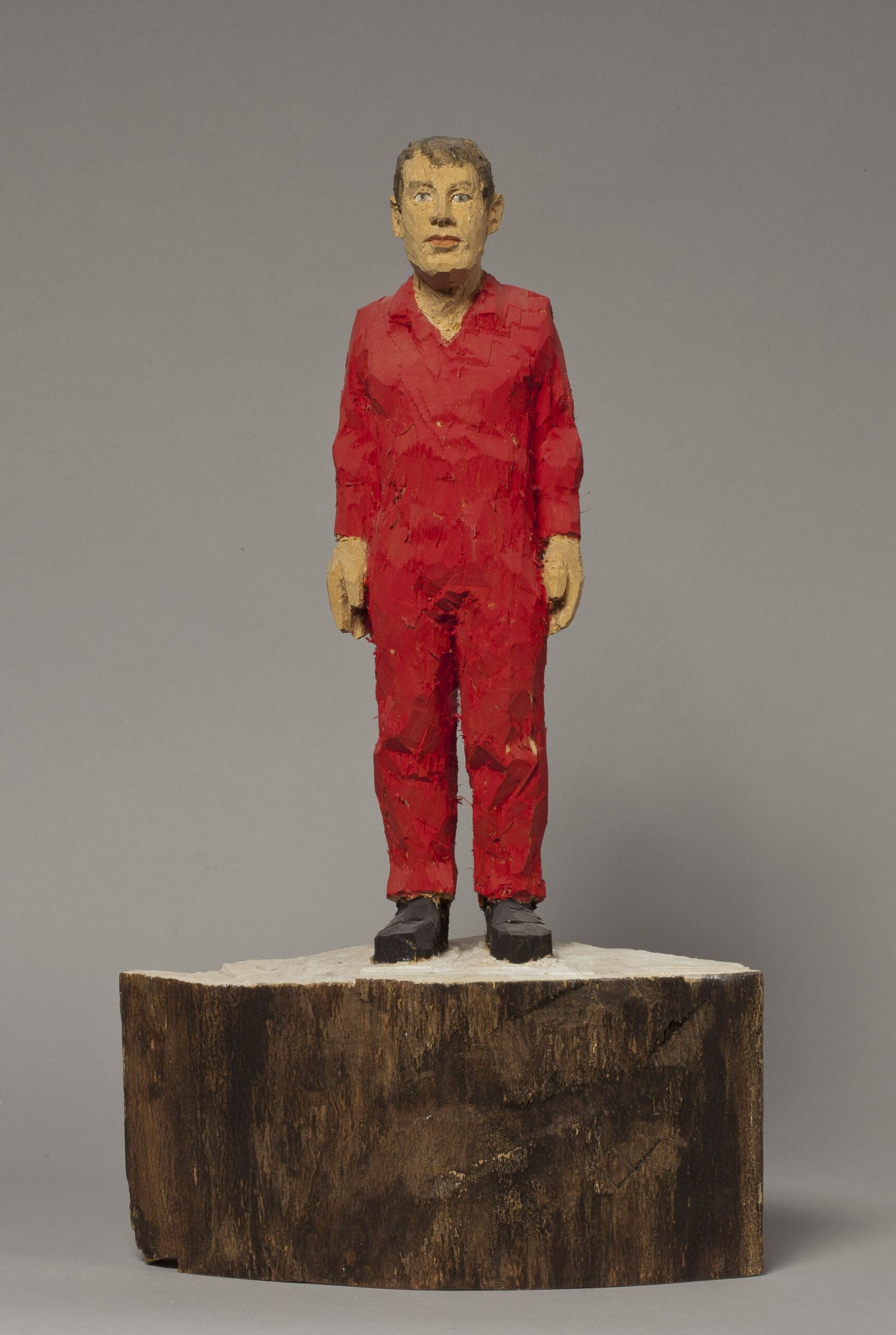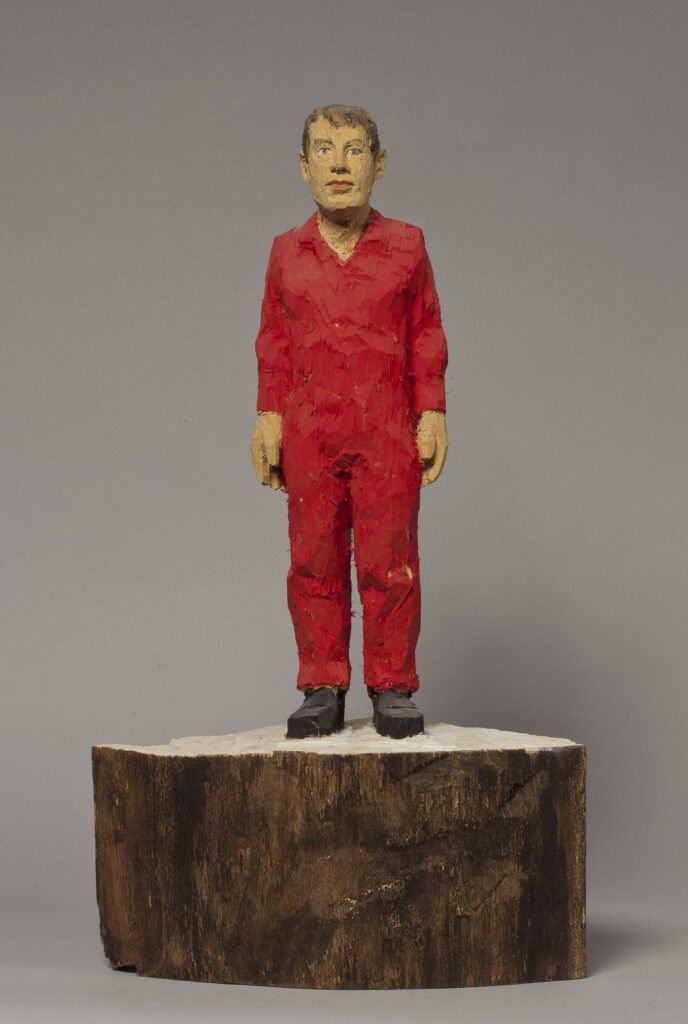Stephan Balkenhol


Past exhibition
Stephan Balkenhol
About the Exhibition
The Arts Club of Chicago will mount the first one-person exhibition in the Midwest of German sculptor Stephan Balkenhol from April 22 through May 30, 1998.
Schooled in the disciplines of Minimalism and Conceptualism under Ulrich Ruckreim, Balkenhol chose to work with the figure, questioning why contemporary artists were not making figurative sculpture. Using the traditional vocabulary of sculpture—carved wood, pedestals and polychrome—he presents the human figure in present conditions. Balkenhol’s repeated use of the figure of a man, standing at ease, having no discernible activity or pose and dressed in black pants and white shirt, has been called the modern “everyman.” He stated that “… human figures have to do with self-reflection on some level. You may identify with the figure and the context; they can work like a mirror. You might see it as a sculpture of somebody, and wonder who it is.”
Balkenhol has created a new body of work for this exhibition in the continuation of what the artist has referred to as, “the adventures of the small man in white shirt and black pants.” Scale varies in the nine pieces in the exhibition from an oversized man lounging on a platform or a group of four undersized figures on columns, to a tiger hybrid and wall reliefs. These remarkable “everymen/women” stand, sit, and lounge on pedestals usually reserved for heroes and heroines. A student of traditional sculpture, Balkenhol uses size and different types of bases to enliven the dialogue with sculpture’s history.
I used to attempt to eliminate any narrative aspect whatsoever from my works.Today I still refuse narration when I voluntarily omit gesture and expression, but sometimes, and increasingly perhaps, I take an interest in the problems connected with it, and in the question or subject.
Installation is an important aspect of Balkenhol’s work and he uses it to set up the possibility of a dialogue between his figures and the audience. The viewer encounters carefully placed men, women, animals and hybrids which vary in size and groupings. Balkenhol feels that even though we anthropomorphize animals, they are alien to us and he wishes to reinforce their strangeness. The hybrid pieces also reflect his interest in Egyptian art. The position and stance of all of his figures echo Egyptian art’s aura of eternity and tranquility.
About the Artist
Balkenhol uses wood because it is a common material and easily obtained. He works extremely fast to produce rough carvings that retain the marks of his tools and remind one of the artist’s presence. The unfinished quality of the crudely carved figures works against the sophisticated anominity of the man in black pants and white shirt. The figures are minimally painted—black pants, white shirts, one-color dresses, with daubs of color for hair, eyes and mouths. The figures seem caught before or after an action, at a stasis, punctuating the space and arresting the viewer’s attention.
Balkenhol’s United States exhibitions include a retrospective at the Hirshhorn Museum and Sculpture Garden, Smithsonian Institution, Washington DC in 1995 (which traveled to The Montreal Museum of Fine Arts) and the 1995 Carnegie International, Pittsburgh. He has exhibited extensively throughout Europe, having one-person exhibitions at The Irish Museum in Dublin in 1991, Witte de With Center for Contemporary Art, Rotterdam in 1993, Musee Departmental de Rochechouart in 1994 and the Saatchi Gallery in 1996.